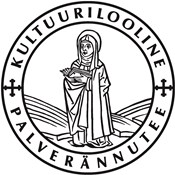The Village of Vaali and the Republic of Vaali
THE VILLAGE OF VAALI – THE PLACE WHERE ESTONIA WAS DECLARED A REPUBLIC IN 1905
There is a big surprise in store for us in the Village of Vaali. Has anyone heard of the Republic of Vaali?
Leaving behind the wonderful landscape of Norra with its numerous springs and a stately mansion, we proceed along a path that meanders through the forest and come to a state within a state – „the Republic of Vaali”. Vaali is a small village in the forest on the edge of Koigi Parish. Of the region which once boasted of prosperous farms only a memory survives. According to the latest census only 28 people live in the village.
The original name of the village was Majavere, mentioned in the written records already in 1471. The first records of Majavere Manor date from 1586. The place was called Metsataguse after Johann Metstacken, Lord of the Manor. In the mid-19th century the manor passed into the hands of Alexei von Wahl. The manor and the nearby village of Ohuvere were both named after the new owners. Vaali Manor was the dairy farm of Päinurme Manor and was owned by the von Wahl family until the land reform of 1919. After the expropriation of manorial lands the Vaali manor house was used by the Forestry Department of Järva County government. Under the Soviets the mansion accommodated the office of a local collective farm,
There are ruins of Lubjasaare Farm in the Village of Vaali, about a kilometre to the west of the road to Koeru. This is where Hans Anton Schults, one of the best-known and most prolific collectiors of folklore in Järva County and in the whole of North Estonia was born and grew up. He had very little formal education and was mostly self-taught, but he was able to record the texts in dialect with a scholarly precision, As a tailor and an itinerant bookseller he moved from village to village and, between 1890 and 1903, he sent to Jakob Hurt 2273 pages of folklore, which he had collected from the vicinity of his home, especially from the region of Koeru, Koigi and Päinurme. In 1905 Schults became the spokesperson for landless peasants.
The Village of Vaali is more widely known because of the revolutionary events in 1905. The relationship between the landlords and the tenants at Päinurme and Vaali had become quite strained, because the lords would not give up any of their privileges. The peasants were not satisfied with the situation which they felt was unjust. For example, the tenants at the manors of Vaali and Päinurme lacked contracts, as the old ones had expired. The lord tried to postpone drawing up an agreement as long as possible. Until then the peasants were to pay rent according to the old terms and there were many additional services. The lord also refused to sell farmland. This embittered the tenant farmers. Both they and the landless peasants were ready for a joint action.
The revolutionary ideas were actively supported by the proprietor of Palsu Farm Mart Jürman (he was chairman of a local court at Udeva and President of the Koeru Agricultural Society) and by Hans Anton Schults, who was a tailor. The shop of Palsu Farm was the gathering place for all the locals. Here Mart Jürman read the newspaper Olevik aloud and there were discussions later.
The people of the Village of Vaali demanded that lands annexed to the manor should be returned to them. As no agreement was reached with Georg von Wahl, Lord of Päinurme Manor, the villagers decided to take action and parcelled the land out among the landless peasants. An agreement containing 22 articles was drawn about how to divide the manorial lands.
This land reform was not the only achievement of the villagers of Vaali. In addition, the local men created a militia – a voluntary military force. In November 1905 they went to the Tartu Congress of People’s Representatives. Without receiving any definite instructions they returned to Vaali and decided to declare their own Republic of Estonia. A manifesto was written and a constitution was drawn up. Anton Schults was elected President of the Republic of Vaali.
The ideas and achievements of Vaali villagers were met with counteraction from the local landlords. The lords of Päinurme and Koeru manors invited the puntive troops of sailors to Koeru in mid-December. On Christmas eve, 1905 the punitive troops came to Palsu Farm. Mart Jürman and his son Voldemar, Anton Schults and his fellow thinkers were arrested. They were taken to Koeru, where they were summarily executed in the same evening. Mart Jürman’s son August Jürman (who became a minister in the Estonian government later on) miraculously escaped. Thus the attempt by the Päinurme-Vaali peasants to do away with injustice failed and the previous situation was restored.

August Jürman (in 1937 renamed Jürima, 1887–1942,) who escaped the bloodbath of 1905 was later a politician and a statesman. He was a key figure politics and the design of national economic policy in the Republic of Estonia between the two world wars. After Estonia was occupied by the Soviets, he was arrested in Tallinn on 5 October 1940. August Jürman died in Kirov Oblast on 15 August 1942.
In 1935 a monument (sculptor Juhan Raudsepp) was put up in Koeru with a text that reads: „In memory of those fallen for the founding idea of the Republic of Estonia in Koeru in 1905”. There is a big boulder with a plaque at Palsu Farm with a text that reads: „Here, at Palsu Farm, the idea to declare Estonia an independent republic was born in December 1905”

Celebrating the 110th anniversary of the Vaali Republic in Koeru and in Palsu farm in Vaali village on 29 September 2015.

Ründo Mülts
Sources
https://jarvateataja.postimees.ee/2062353/vaalis-sundis-vabariik
https://secreturbanist.blogspot.com/2013/02/1905-aasta-sundmused-vaalis-koigi-vald.html
https://www.folklore.ee/radar/story.php?area=Koeru&id=1180
